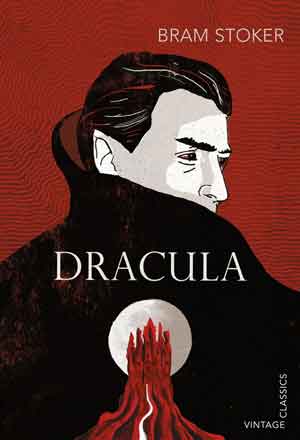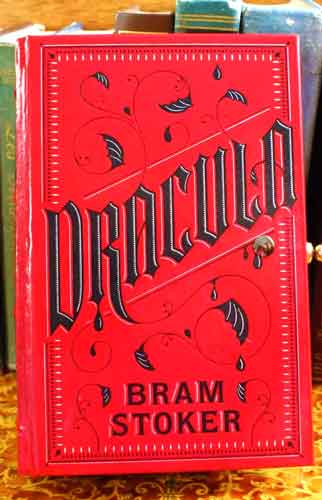DRACULA may well be the most famous horror novel of all time. So iconic is Bram Stoker’s masterpiece, which has gone through innumerable publishers and editions over the 100-plus years of its existence, that I’m almost chagrined to admit I’m never been entirely thrilled with it. I tend to agree with the verdict put forth in Richard Matheson’s I AM LEGEND, whose protagonist proclaims it a “hodgepodge of superstitions and soap opera clichés,” although I do recognize there’s a reason for DRACULA’S longevity. Indeed, according to the novelist and historian David J. Skal (author of the indispensable volume HOLLYWOOD GOTHIC, which explores DRACULA’S impact on the film world and western culture overall), the novel is actually more relevant now than it was when initially published.
DRACULA may well be the most famous horror novel of all time.
I’m sure you know the particulars of the story, even if you haven’t read the book: Jonathan Harker, a British legal solicitor, travels to the Transylvanian castle of the mysterious Count Dracula to oversee a property transaction. Harker quickly learns that his seemingly refined and erudite host is in fact a centuries-old vampire, and becomes trapped in the castle with a trio of vampire babes while the Count heads off to England. Dracula makes his journey on a Russian schooner whose crew gradually disappears, and when it reaches land is empty but for a dimly glimpsed canine that quickly runs off.
DRACULA is notable for its epistolary format, consisting entirely of passages from letters and diaries written by the protagonists (which reportedly inspired Stephen King’s similarly formatted CARRIE).
Trailer for the 1992 film, Bram Stoker’s Dracula.
That dog is of course Dracula in disguise, and he wastes no time making his presence felt by Harker’s fiancée Mina and her friend Lucy, who suffers from sleepwalking spells brought on by the Count. Dracula’s influence also spreads to Renfield, an incarcerated madman who eats bugs to absorb the essence of his blood-drinking master. Renfield’s overseer Dr. Seward, who happens to have been one of Lucy’s many suitors, calls in his mentor, professor Van Helsing, who correctly diagnoses Lucy’s “illness,” and deals with her accordingly—by pounding a steak through her heart and beheading her. Dracula focuses his attentions on Mina, by which point Jonathan Harker arrives home from Transylvania and joins Van Helsing’s anti-vampire crusade. The book concludes with Dracula heading back to Transylvania, with Van Helsing and co. in hot pursuit.
DRACULA is notable for its epistolary format, consisting entirely of passages from letters and diaries written by the protagonists (which reportedly inspired Stephen King’s similarly formatted CARRIE).
DRACULA is notable for its epistolary format, consisting entirely of passages from letters and diaries written by the protagonists (which reportedly inspired Stephen King’s similarly formatted CARRIE). The device often works fairly well, particularly in the ocean-set passages, in which the captain of the Dracula-bound ship records the increasingly horrific happenings that befall the ship’s crew, but it can just as often be annoying, as in the portions written by Mina, in which Stoker’s Victorian sentimentality is allowed to run wild.
…Stoker’s Victorian sentimentality is allowed to run wild.
Victorian is something this novel definitely is, although it contains many elements that still resonate. The highly xenophobic anti-immigration stance (fears of England being contaminated by European culture were rampant when DRACULA was written) is one such element, as is the presentation of the vampire as a cultured aristocrat who literally lives off the life force of his underlings. The character, for the record, was allegedly inspired by the Vlad the Impaler, who ruled Wallachia during the years 1456 to 1462, although Dracula was more concretely based on Bram Stoker’s former boss Henry Irving, a cultured actor and theater manager. These days, of course, the Count seems most redolent of a Wall Street tycoon or greedy CEO.
Of course, DRACULA, like Mary Shelley’s FRANKENSTEIN, is destined to be best known for its many film adaptations, which range from F.W. Murneau’s unauthorized adaptation NOSFERATU (1922) to Tod Browning’s DRACULA (1931) to Francis Ford Coppola’s BRAM STOKER’S DRACULA (1992, see trailer above). The novel is still worth reading, but one must be forgiving.


